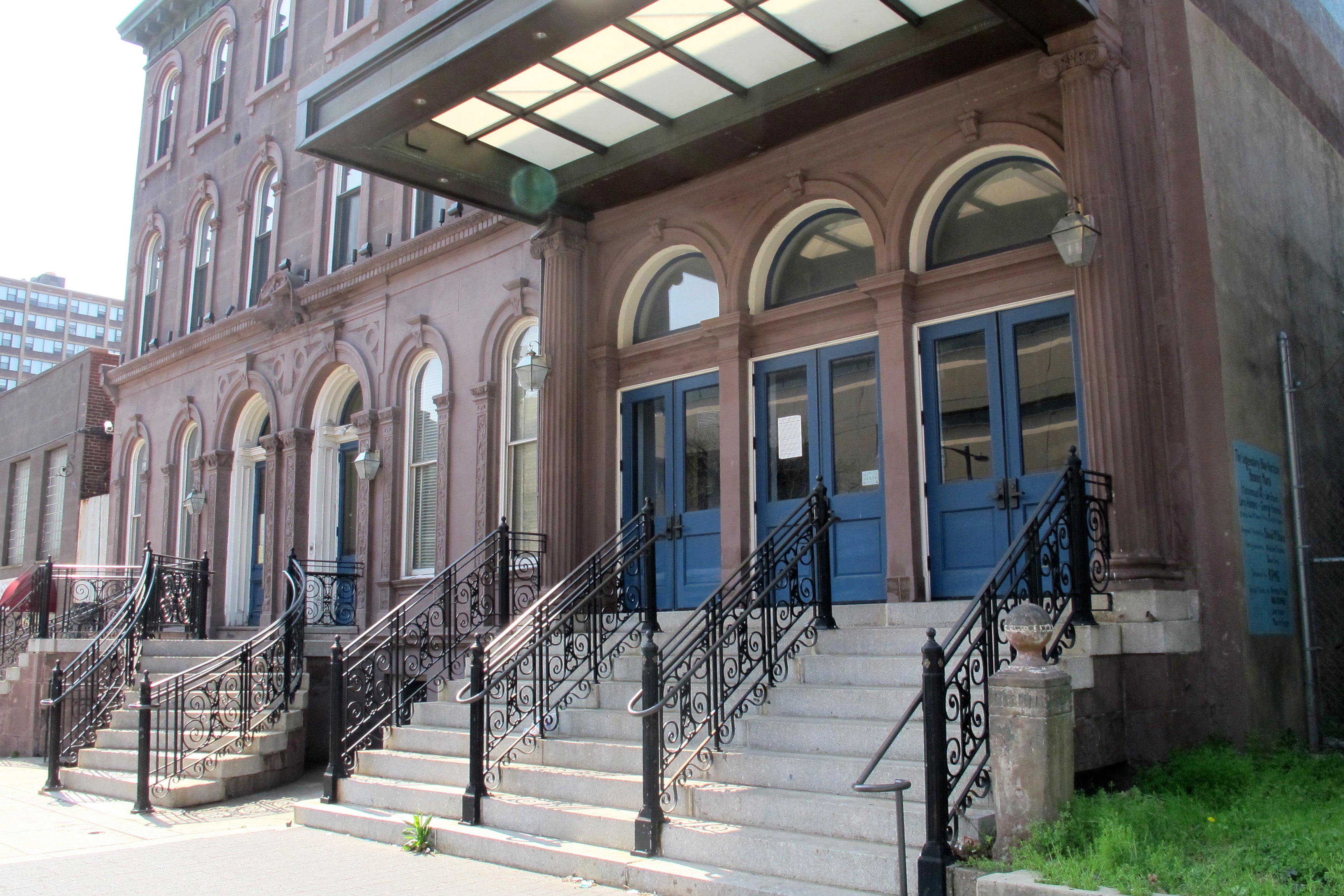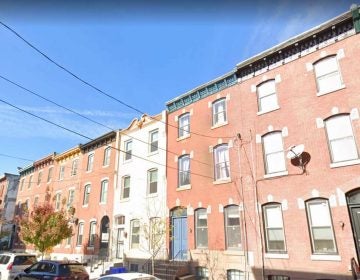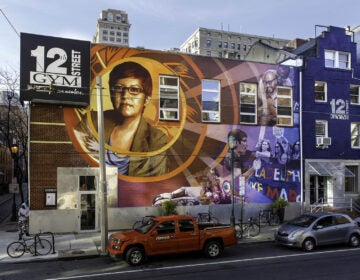From Blue Horizon to Catholic art: 2014’s slate of historic nominations

From cobblestones to push pins, auto-oriented art deco to boxing, the Philadelphia Historical Commission’s Committee on Historic Designation heard eight applications covering a broad spectrum of Philadelphiana on Wednesday morning, evaluating what should be added or removed from the Philadelphia Register of Historic Places. The Philadelphia Historical Commission will review its recommendations at its meeting on December 12.
Legendary Landmark: Blue Horizon, 1314 North Broad Street
North Broad Street’s Legendary Blue Horizon, born as a fraternal lodge and converted to one of the world’s most famed boxing venues, was the subject of two nominations submitted by the Preservation Alliance for Greater Philadelphia. One would designate the auditorium interior as historic and another that would designate only the building’s exterior.
These nominations comes years after plans to develop the property into a boutique hotel were first floated by Mosaic Development Partners and Orens Brothers. They also come after the developers have been approved by the Department of Licenses and Inspections for a permit for partial demolition and erection of a five-story building.
Three lawyers representing the owner and developers asserted that they did not receive notice of the hearing in time enough to respond to the nomination and requested a continuance, which was supported by all.
To members of the community who turned out for the meeting, the investment and new life that the proposed development would add is a boon for the neighborhood. Developers also contend that their current plan, which involves preserving only the façade and peppering their hotel with nods to the building’s past, is preservation enough.
But as the Preservation Alliance’s Ben Leech said, “preservation of the façade is not preservation of the Blue Horizon.” The property’s primary significance doesn’t stem from three historic brownstone facades on North Broad, which is why the interior designation is also on the table.
This one looks like it will go a full 12 rounds. The designation committee recommended that the Historical Commission approve a one-month continuance of this case and remand consideration of the nominations back to the designation committee for a full hearing.
Community Character: Benjamin Kenworthy House, 365 Green Lane
At the gateway to Roxborough, high above the corner of Manayunk Avenue and Green Lane sits a stately mansard roofed stone mansion that was home to a prominent Manayunk mill-owning family. It is one of a cluster of similar buildings; all built by related family members with ties to the mills down the hill that Roxborough residents are hoping to preserve. Some community members initially wanted to pursue a small historic district for 12 buildings, but were discouraged due to the still unresolved Overbrook Farms Historic District debacle. This is the first of those properties to be nominated because it is seen as particularly vulnerable.
Even as the nomination application for 365 Green Lane was being developed, and the area was rezoned to protect the single-family residential character, the owner passed away and the property was sold to a developer wanting to raze it in favor of denser new development.
The current owner has been issued a demolition permit by the Department of Licenses and Inspections, which he could act on at any point because the historic nomination application was received after the demolition permit was issued. The commission may, however, still designate the building based on its significance.
The property is currently listed for sale and the owner has agreed not to act on the demolition permit while he and the community continue to discuss possible alternatives. The designation committee recommended designation, and urged the owner and community to continue working together to come up with a solution.
Deco Garage: 1501-05 Fairmount Avenue
An art deco garage on Fairmount Avenue was nominated for listing in the Philadelphia Register of Historic Places by the Preservation Alliance for Greater Philadelphia for its distinctive architectural character as applied to a low-rise commercial building.
Philadelphia has a rich collection of art deco buildings, but very few small commercial buildings are designated historic. This one is already considered a contributing building to the Fairmount Avenue National Register District. The property currently remains an auto-oriented use, currently as Overseas Motor Works.
Robert Schusterman, a lawyer and architect representing the owner of 1501-05 Fairmount, argued that the property’s cast stone is in disrepair and that because of its condition designation would make it more costly for the owner when it comes to fixing the exterior. (Cost estimates have not yet been obtained, however.) Schusterman also expressed the concern that designation would cause the property to have unrealized development potential under its current zoning. The former is a legitimate issue that the owner will raise before the Historical Commission and possibly its Committee on Financial Hardship. As to the issue of redevelopment, it is not considered a hardship if a property owner cannot achieve its highest and best use.
The committee recommended that 1501-05 Fairmount Avenue be designated historic.
Object D’art: The Angelic Exaltation of St. Joseph into Heaven, in Old St. Joseph’s Church, 321-27 Willings Alley
High on the ceiling of Old St. Joseph’s Catholic Church is a circular painting on canvas called The Angelic Exaltation of St. Joseph into Heaven. It dates from 1886 and the parish wants it to be designated as an historic “object.” (Designated objects are different than designated interiors in that while they must be related to their specific setting or environment, they are also movable.) The work is notable for its age and cultural history but also because it is attributed to Filippo Costaggini. Costaggini is an Italian artist who adorned the United States Capitol Rotunda with his paintings.
Old St. Joseph’s is already listed in the Philadelphia Register and the committee recommended the full commission list the artwork as an object as well.
Industrial Heritage: Keystone Dry Plate and Film Works / Moore Push-Pin, 113-29 Berkley Street
Despite Philadelphia’s incredible industrial history, too few of our historic places of production are afforded local historic designation. A nomination originated by Historical Commission staffer Kim Broadbent could change that for one complex at Wayne Junction, which is already a National Register Historic District.
This complex of buildings was home to Keystone Dry Plate & Film Works, pioneers in commercial x-ray plates, from the 1880s until 1912. Starting in 1912 the company that invented pushpins expanded the complex and called it home until 1977. It’s now used as a recovery house, operated by Recovery King Sanctuary of God.
Wayne Junction was an important hub of manufacturing, though some survivors are underused and a lack of historic designation precludes a review process for their protection. The former silk mill next to Moore Push-Pin was razed in 2012.
The committee recommended designation, despite questions about the owner’s support for listing.
History Underfoot: Amendments to the Historic Street Paving Thematic District
Across Philadelphia there are streets paved with Belgian Block, granite, wood, and brick. Because these street surfaces are so distinctive and add so much historic character to their many miles of historic streets were afforded protection by a thematic listing in the Philadelphia Register.
This year the Streets Department worked with Historical Commission staff to evaluate the condition of the city’s streets with historic surfaces, and resulted in recommendations for additional streets to designate historic and a few to remove from the list due to poor condition and insensitive resurfacing. The committee recommended that the Historical Commission add the suggested blocks but asks Streets to take a closer look at those blocks it would delist.
This effort in intended to help Streets determine how to spend scarce funds for restoration strategically and build a stronger case for increased funding. Right now the Streets Department only has $250,000 per year to spend on restoration, but estimates the cost of restoring an entire block costs double that.
The committee applauded the Streets Department’s cooperation and interest.
Non-Historic: 312-14 North 2nd Street
A single-story garage at 312-14 North 2nd Street in the Old City Historic District had been listed as a contributing building to the district when it was designated. But further research, more than a decade later has revealed the garage dates from the 1960s – well after the period of significance for the district. Architect Richard Thom who helped develop the district attended the meeting to represent the owner. Thom acknowledged that at the time Old City was surveyed they realized there were a handful of properties that, like this garage, may have been improperly categorized. City records for the property’s date of construction were less clear at the time of designation. The committee recommends that the garage property be reclassified as noncontributing to the district.
WHYY is your source for fact-based, in-depth journalism and information. As a nonprofit organization, we rely on financial support from readers like you. Please give today.







